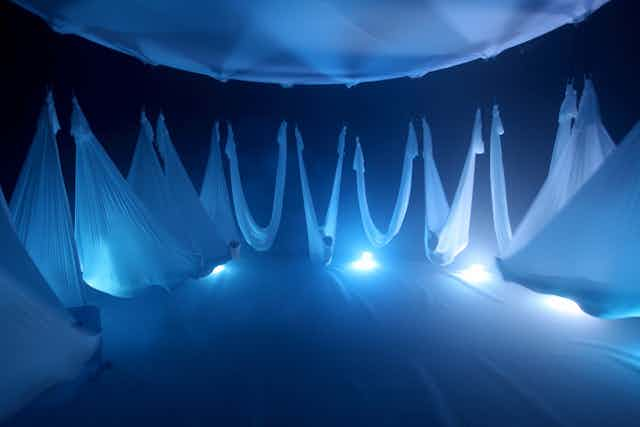Science was once seen as the stuffy domain of pale male scientists who spent far too much of their time in the laboratory concocting potions in test tubes while avoiding sunlight and human interaction. Occasionally they would venture out of the lab to give lectures and impart their wisdom to science students. But they would rarely confront the general public. Now, thanks to the growing number of science festivals, scientists are engaging with people in unique, innovative – and often surprising – ways.
Science communication has evolved in recent years, breaking the age-old tradition of the elite scientist imparting knowledge to the interested layman. Thanks to the increasing emphasis in academia on public engagement, it is now expected that learning about science is an open, democratic process – something shaped by professionals, but led by the public.
Today the language of science communication is replete with words such as create, experience, explore, participate and journey. It all makes participation in public science feel more like a fun day out than a classroom chore.
Public science events date back to the days of the Ancient Greeks when the likes of Plato and Aristotle would speak in public about their theories of science and philosophy. The British Association for the Advancement of Science (now the British Science Association) began holding annual meetings 1831 and these evolved into the modern day British Science Festival – a festival held in a different UK city each year. But it was the Edinburgh International Science Festival which coined the term ‘science festival’ at its inception in 1989.

There are now more than 60 science festivals in the UK, combining different mixes of science, technology, engineering and maths (STEM) with the creative and expressive arts becoming ever more involved too. Science festivals may also encompass events that don’t identify as “science” but which contain aspects of science education or involvement. The Green Man Festival in Wales hosts “Einstein’s Garden” – which combines science activities, shows, performances and immersive science experiences.
Similarly, the award-winning BlueDot Festival describes itself as an intergalactic festival of music, science, arts, culture and the exploration of space. BlueDot is a particularly innovative festival in that it combines a stellar line-up of music and artists with a ground-breaking programme of live science experiments, expert talks and artworks.
It’s not all about STEM
Undoubtedly, science festivals are principally celebrations of STEM and its importance and value to society. But they can also become spaces of interrogation and the boldest and most creative festivals create space to challenge scientific orthodoxy.
In 2015, Mary Midgely was awarded the Edinburgh Medal for her contribution to the well-being of humanity. Over the past 30 years her writings have informed debates concerning animal rights, the environment and evolutionary theory. As a staunch opponent of reductionism and science jargon, the award to Midgely sent out a clear message that public science can embrace criticism.
Democratisation of science was once seen as bringing scientists out of the lab to give public talks. But the tragedy of this format is that although it removed the physical barriers of the laboratory walls, it reinforced social barriers – scientists being there to speak and dispense their wisdom – and the public’s role is to listen and accept science as the ultimate truth.
But the changing needs of the science industries, funders and the public have forced a change from the old methods. Science festivals now offer science shows, musical and theatrical performances, panel discussions, art installations and digital platforms. There are also crowdsourced creations, such as mathematician Dr Katie Steckles’s Mega-Pixel project, which saw people collaborate globally to create a giant photoscreen at the Museum of Science and Industry.
The more successful festivals have shifted away from preaching to the converted towards engaging unsuspecting audiences in unfamiliar experiences. Manchester Science Festival under its director Antonio Benitez installed a public sleep laboratory – the chronarium — in a busy shopping centre. It transformed a public space into a haven for relaxation and well-being while reinforcing the importance of resting our body clock.
Similarly, the Edinburgh International Science Festival recently launched its “Moments in Time” exhibition for its upcoming festival. It used outdoor installations of famous Tardis-like police boxes that allow people to time travel and see scientific achievements and advances from the Enlightenment period to the industrial revolution and the digital age.
The UK is desperately short of scientists and engineers, which means science festivals now have a more important role than ever in conveying to young people how science and engineering can be a fun and rewarding career. In 2016, Manchester was the European City of Science and created the Great Science Share as part of its Science in the City Festival. This event encouraged children from 200 schools to run their own science festival and share what they learned with each other. This unique format allowed children to be both the communicators and the audience while the teachers took a step back.
So it would seem that public interest in science festivals is on the up. And in an age which seems to be defined by anxieties about the relevance of expertise and questions about public trust, that is a tremendously reassuring thought.

